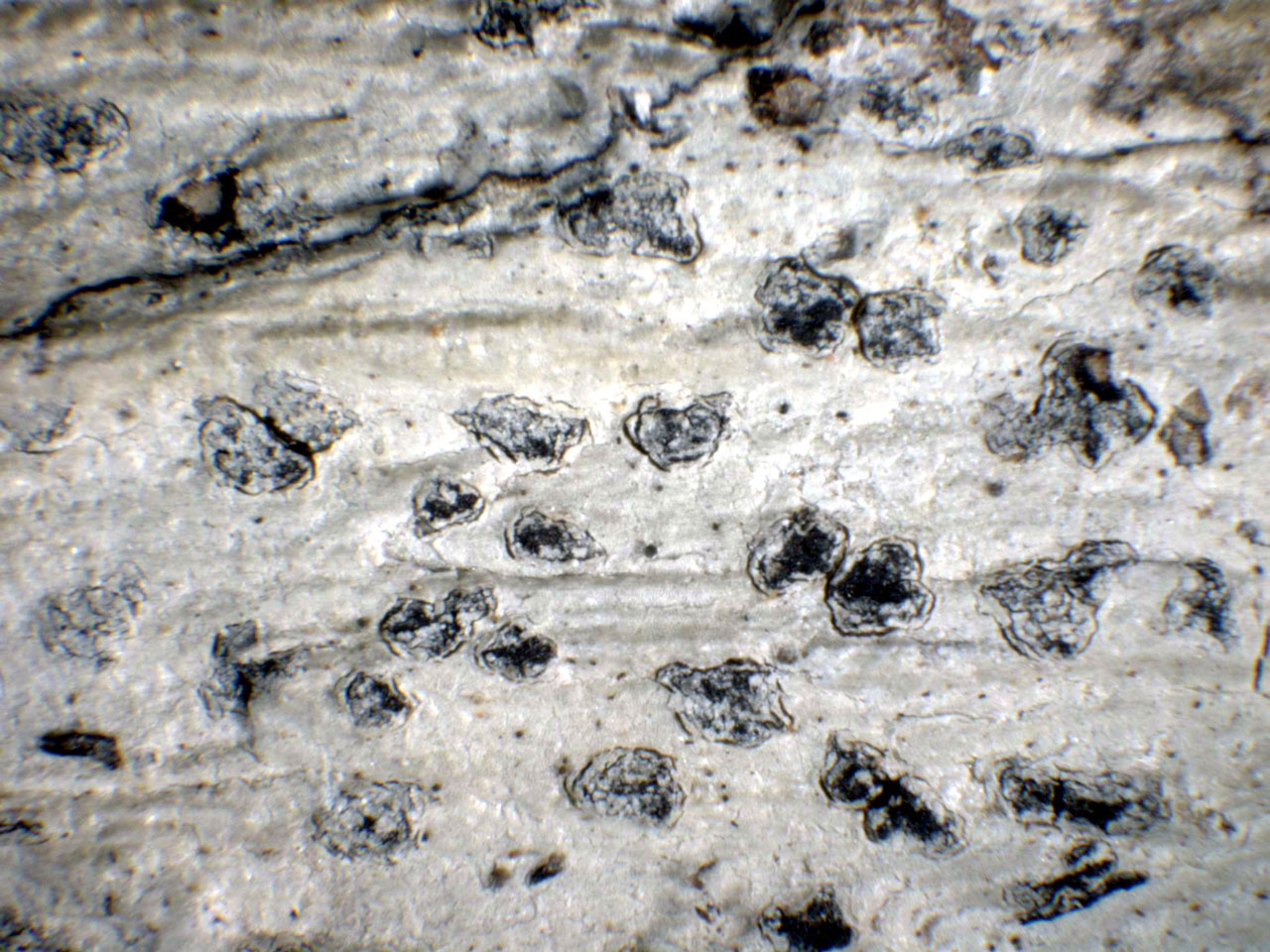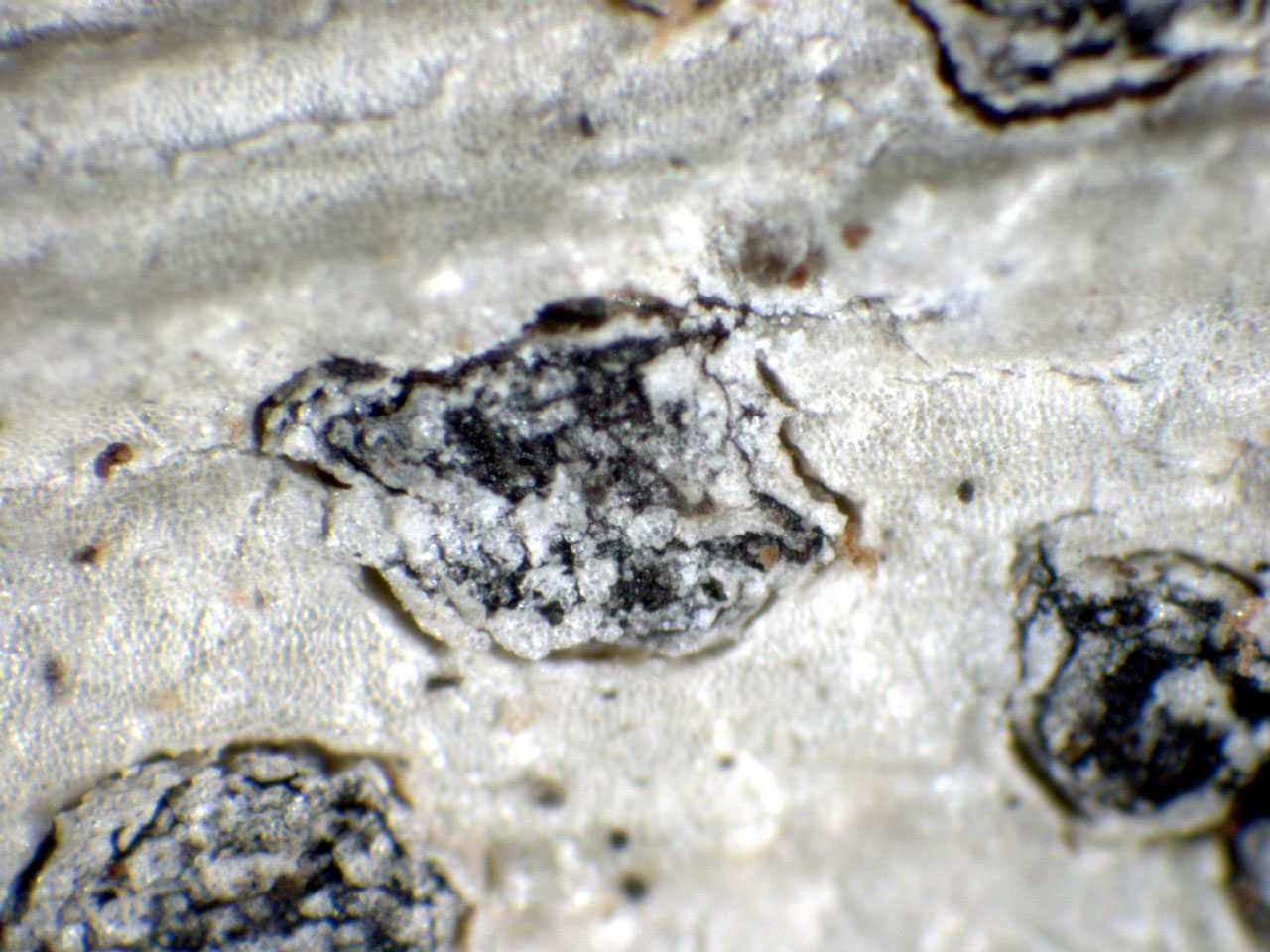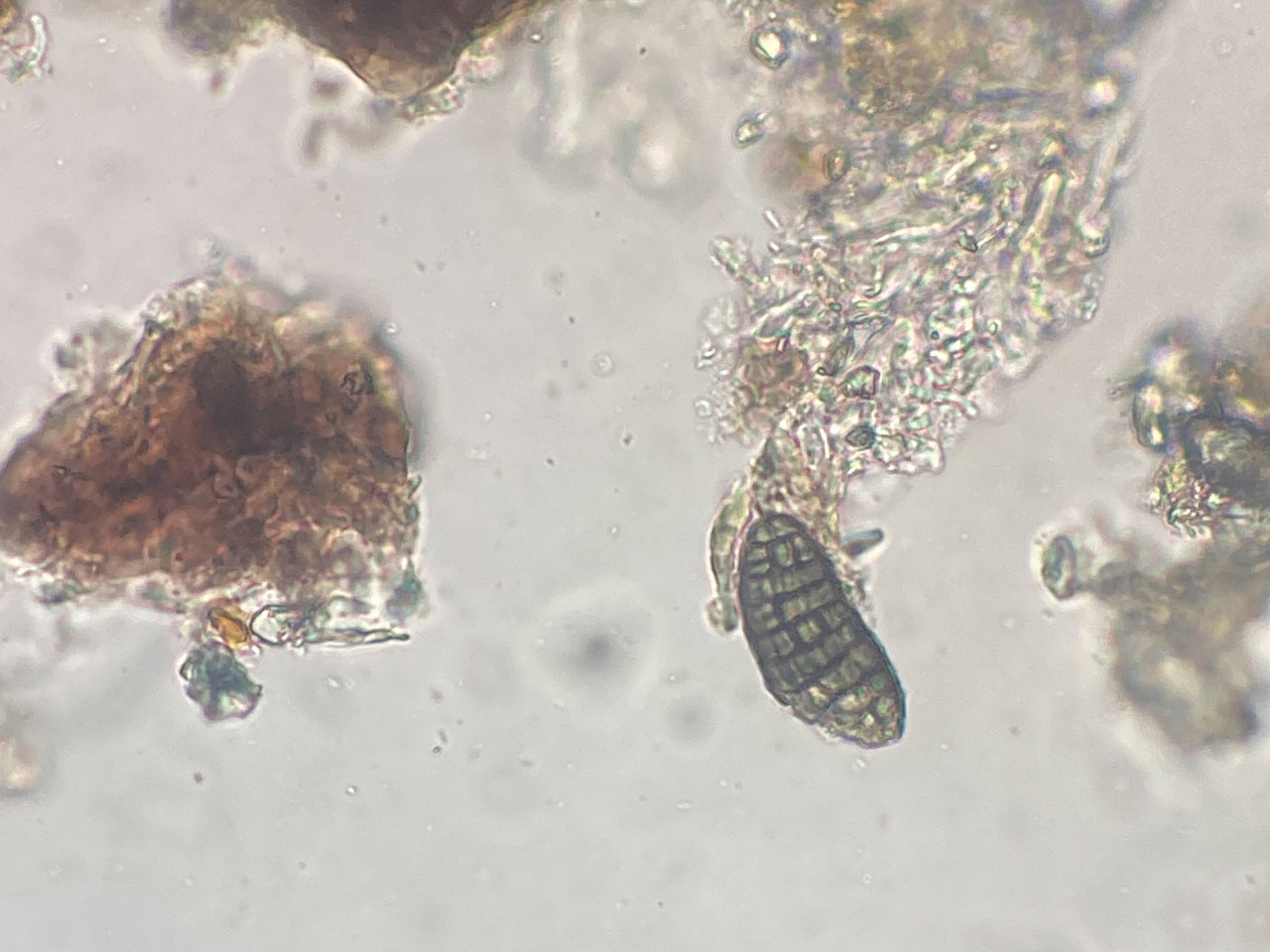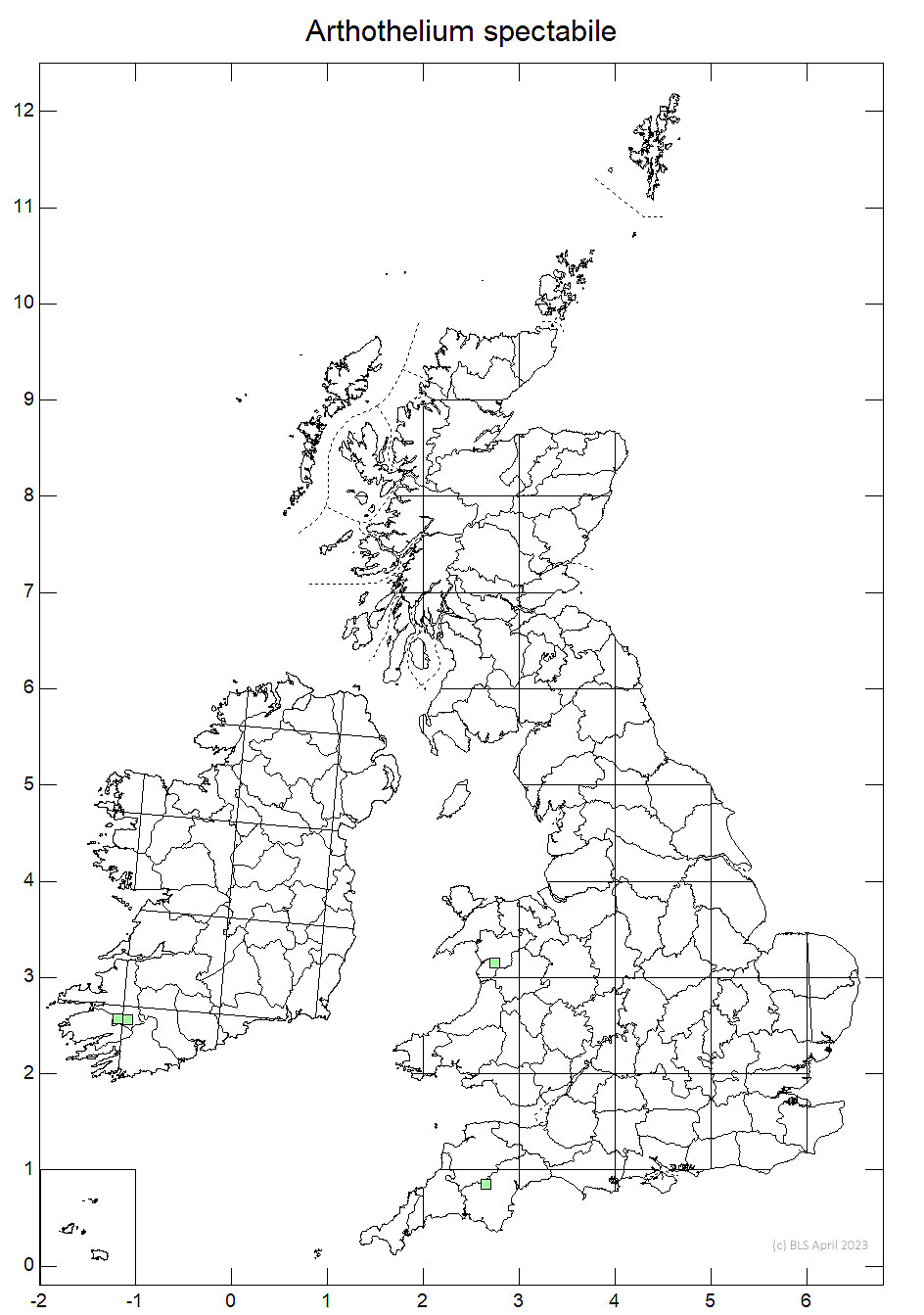Arthothelium spectabile
A spectacular lichen of smooth bark in old woodlands, with a cream thallus and large black apothecia with muriform spores. A few 19th century collections were made from the south west of Britain and Ireland but there have been no records since, although this is an easily spotted species. A rather mysterious species, which maybe is still be refound here.
Thallus immersed, creamy- or grey-white, usually delimited by a brown line; photobiont trentepohlioid. Apothecia to 1.2 mm diam., or somewhat elongate to 2 mm long, irregularly rounded or polygonal, black, not pruinose, in section 120–150 µm tall; epithecium red-brown, K+ reddish; hymenium and hypothecium pale reddish-brown, K± faintly greenish; paraphysoids 0.5–1 µm diam., numerous, the apices usually not pigmented and without caps. Ascospores 26–36 × 12–15 µm, ellipsoidal to cylindric-ellipsoidal, muriform, with 5–7 transverse septa, most transverse cells with 1-3 longitudinal septa.
See also A. norvegicum. According to Frisch et al. (2015), this species clusters with Pachnolepia pruinata, but its relationships need confirmation.
On ± smooth bark in old woodlands.

Probably extinct in Britain and Ireland (not reported since 19th century).
This is a rather spectacular species and not easily to miss, so it does seem likely to be lost from Britian and Ireland. Given the lichen's current strongly sub-oceanic distrubution, the locations it was collected from are surprisingly strongly oceanic, so its past occurrence, and subsequent loss, is a bit mysterious.
Britain: Regionally Extinct
Cannon, P., Ertz, D., Frisch, A., Aptroot, A., Chambers, S., Coppins, B. J., Sanderson, N. A., Simkin, J. & Wolseley, P. (2020) Revisions of British and Irish Lichens Volume 1 August 2020 Arthoniales: Arthoniaceae.
Frisch, A., Ohmura, Y., Ertz, D. & Thor, G. (2015). Inoderma and related genera in Arthoniaceae with elevated white pruinose pycnidia or sporodochia. Lichenologist 47: 233–256.
Text by Neil A Sanderson, based on Cannon et al (2020)




